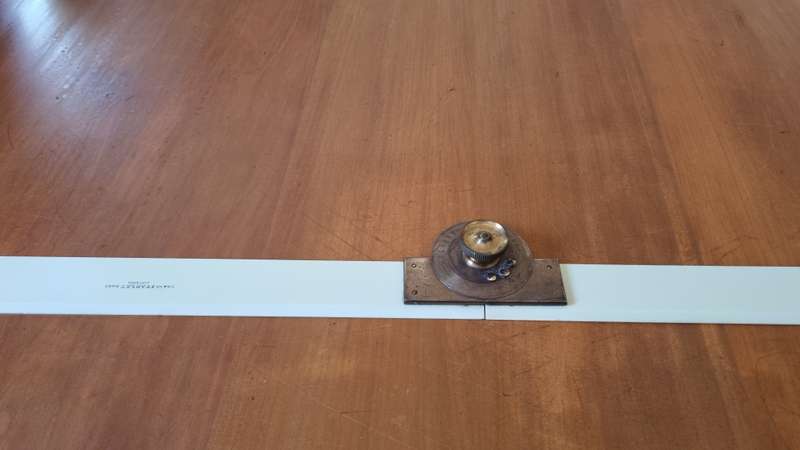











Vintage 12 inch Isograph Stanley Tool Mark. Pristine condition. 1912-1931. Drawing instrument.
Check my rate
| Main centres: | 1-3 business days |
| Regional areas: | 3-4 business days |
| Remote areas: | 3-5 business days |












| Main centres: | 1-3 business days |
| Regional areas: | 3-4 business days |
| Remote areas: | 3-5 business days |
12 inches long ( 33 cm long ).
Solid brass mechanism with central locking thumb screw in perfect working order. Secured by no less than 11 solid brass screws. White arms with Stanley Trade Mark London on the one arm. All in excellent condition, no faults. Protractor dial with 180 degrees clearly marked all solid brass. Weighs over 200 grams.
This is a rare tool whose use was superseded eventually by the adjustable set square. It is really really old and difficult to find more information on but I would judge it to be 1912-1931, most likely to be post 1900 as at that date Stanley was only selling 6 inch ivory isographs. per my detailed research ( see below ). The arms could be ivory but is far more likely to be ivorine, an opaque white celluloid that looked extremely like ivory and came out very early on before bakelite, the earliest form of plastic.
Under magnification the arms show faint straightish lines on the surface, which is a positive test for ivory but is also found in ivorine. I will try and put it under ultra violet light to confirm at some point. It is buttery smooth to touch and does not have roughness or tiny porous holes, so unlikely to be bone.
So I would go with ivorine , but this is your call. I could not be 100% sure of the materials on such an old instrument. Anyhow, it is in excellent condition.
Used in mathematical , architectural , and mechanical drawing.
From p. 221 in "Mathematical Drawing and Measuring Instruments " by William Ford Stanley, published in 1900 (!): "In architectural and mechanical drawing, corresponding angles are frequently required, which are not of sufficient importance to be worth having a set angle for their production. For these purposes the author's isograph will be found very convenient. In construction it resembles a mechanic's two-fold rule, the joint being made stiff and of extra size ; the middle plate of the joint does not come through to the outer edges, therefore the edges may be bevelled down to a proper thickness for producing an ink line. The head of the joint has a protractor divided upon it, so that the two edges of the rule may be set to any angle approximately. The isograph is intended to be used in a similar manner to a set-square, as an accessory to the teesquare, principally for such purposes as slopes of roofs, spires, cones, and other instances where a corresponding angle is required to the right and left hands. "
At the back of the book Stanley lists the products mentioned in the book which he manufactures and sells listing the page numbers of the reference first. On p. 364 he writes:
"p, 221 Isograph 12 in., boxwood, 3-s. 6d. and 5s. ; 6 in., ivory 15 shillings."
While this example is 12 inches and he appears to be only making 6 inch ivory isographs in 1900, he may have made 12 inch ivory isographs at a later date.
However in his later 1912 and 1931 catalogues he lists white ivorine ( opaque white celluloid ) 12 inch isographs with solid brass mechanisms.
Can be sent overseas via DHL Express which takes about a week to most places. Ask for a quote.




